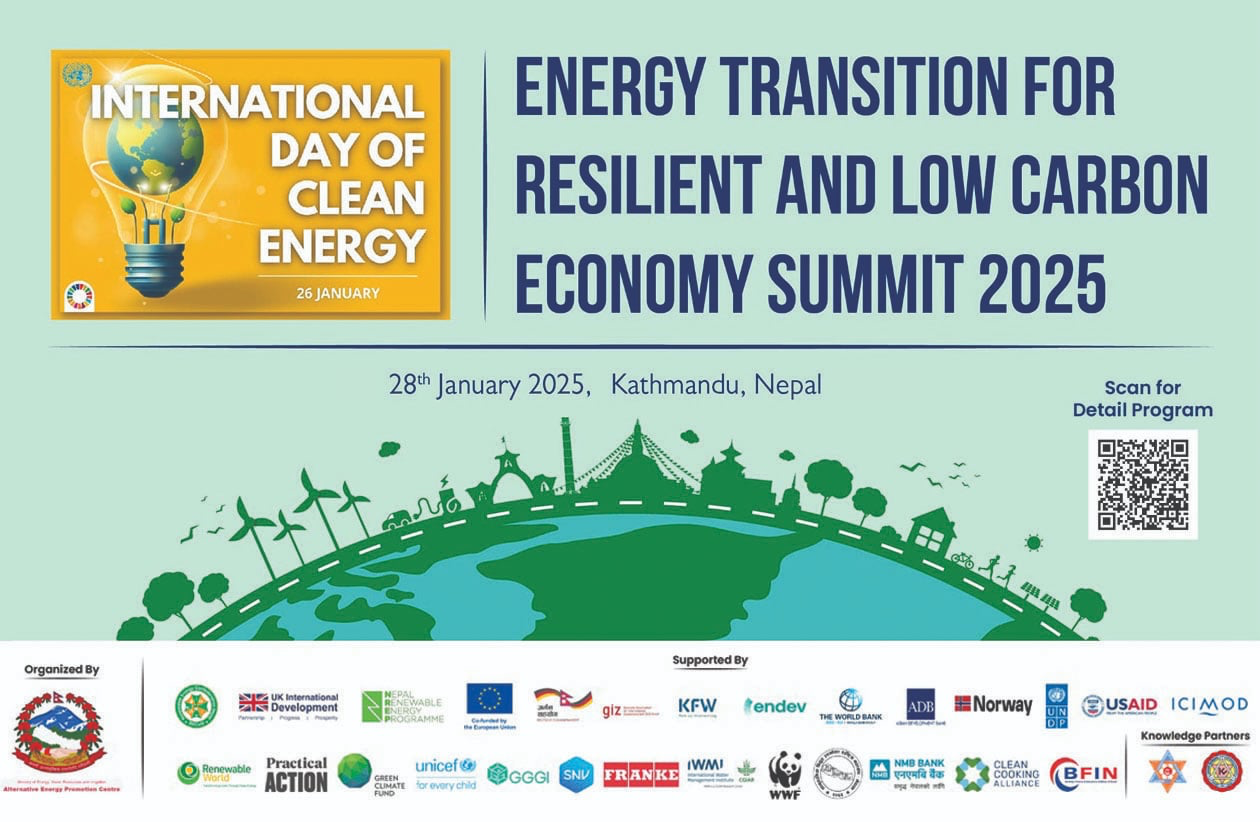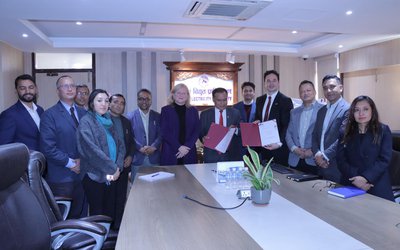
The Seti River Was Diverted To Construct The Dam for the reservoir of the 140 MW Tanahun Hydropower Project
The river, which flows along the boundary of Rishing Rural Municipality-1 and Byas Municipality-5, is 140 meters wide. In order to facilitate the construction of the concrete main dam, a tunnel measuring 626.92 meters in length was built and diverted from the upper coastal region.

The water that was diverted from the main dam construction site through the diversion tunnel has been released d into the Seti River in the lower coastal region.
The river diversion work was inaugurated on Monday by a group of officials, including Shanti Raman Wagle, the head of District Coordination Committee Tanahun, the Managing Director of the Nepal Electricity Authority (NEA) and Chairman of Tanahun Hydropower Ltd Kulman Ghising, Chief District Officer of Tanahun Chabilal Rizal, and Priyantha Vijaytunga, the senior Director (Energy) of the Asian Development Bank . They flew balloons to mark the event.
A 40-meter high temporary concrete coffer dam will be built to redirect the river during the construction of he main dam. The dam will be constructed before the next monsoon.
Managing Director Ghising emphasized that the restoration of the river is a crucial milestone in the construction project. Despite previous delays in selecting consultants and builders, MD Ghising reported progress in completing the project on schedule and implementing it as a model example.The project's overall construction progress is currently at 46%, with the target completion date set for May 2026.
Wagle, the head of the district coordination committee, stated that the project has reached a significant milestone and emphasized the importance of completing the construction as soon as possible. He pledged to address any local issues affecting the project's progress collaboratively and to prevent any obstacles to the construction process.
Thechief of Beyas municipality , Vaikunth Neupane, stressed the need to finish the project within the given time, frame and warned against individuals with vested interests.
Meanwhile, Dadhiraj Subedi, the Head of Bhimad municipality, expressed optimism as the project enters a new phase. This comes at a time when complaints about the counry's condition are widespread.The Chief District Officer of Tanahun, Rijal, stated that the Tanahun hydropower project merits recognition as a national pride project, given its characteristics, financial considerations, and potential employment opportunities. He noted that the collaborative efforts of the local level and administration were instrumental in achieving the current state of the project.
ADB's Senior Director of Energy, Priyantha Vijaytunga, noted that following the completion of the Kaligandaki hydropower project, the bank invested in the Tanahun hydropower project. He suggested that the social and environmental protection measures implemented in Tanahun could serve as a model for the Dudhkoshi hydropower project. He also commented on the notable progress made in Nepal's energy sector over the past year and announced that the ADB would be investing in major projects like Dudhkoshi hydropower.
Kiran Kumar Shrestha, the Managing Director of Tanahun Hydropower Ltd., aims to complete the Tanahun hydropower project with a reservoir on time.
The project is being constructed after Kulekhani and divided into three packages. Under package-1, Song Da Corporation and Vietnam-Kalika Construction Ltd. is building a 140-meter-high dam.
The builders are currently excavating the hill on both sides of the Seti River to construct an additional diversion tunnel and main dam. The progress of the work has reached approximately 54 percent, while the overall progress of package-1 is at 25 percent.
A purchase agreement was signed on 2019 with Sino Hydro Corporation of China for the construction of package-2, which encompasses the construction of a tunnel, power house and supply, as well as the installation and operation of hydro mechanical and electromechanical equipment.
Since the issuance of the construction supervision consultant's order to commence work under the purchase agreement, Sino Hydro has been actively operating at the project site since January 6, 2075 and is currently progressing with the construction work.
Excavation of the underground power plant has been successfully completed, with equipment installation including concreting and turbines underway. The tailrace tunnel construction has been completed, and the main tunnel excavation is ongoing. The construction progress for the civil aspect of this package has exceeded 70%, while the overall progress stands at around 47%.

Under package-3, KEC is constructing a 220 KV double circuit transmission line from Damauli to Bharatpur in Chitwan. As of now, the foundations of 69 of the 94 towers on the transmission line have been laid and 33 towers have already been erected. The overall construction progress of this package is at 69 percent.
Under the social development initiative of the project, the Tanahun rural electrification and distribution system enhancement project was implemented through the project management office of the Nepal Electricity Authority for the purpose of electricity access in Tanahun district.
Two 33-11 kV substations were constructed and commissioned in Ghiring Rural Municipality-4 and Bandipur Rural Municipality-6 to provide electricity to the local communities.
A 33 kV line was constructed to supply electricity to the substations. To ensure reliable and high-quality power supply in the Tanahun district, distribution transformers of various capacities were installed in different locations, and 11 kV lines were constructed.
The total cost of the capital structure and financial management project for the company is $ 500.5 million. The cost includes expenses for transmission lines, rural electrification, and interest during the construction period. The Asian Development Bank (ADB) will provide 1 $ 150 million, the Japan International Cooperation Agency (JICA) will contribute $ 184 million and the European Investment Bank will provide $ 180.4 million. Additionally, the Government of Nepal/Nepal Electricity Authority will contribute $80.6 million
- Weather Forecast: Partly To Generally Cloudy In Hilly Regions of Karnali, Gandaki And Koshi
- Feb 09, 2025
- Ambassador Oli Paid A Courtesy Call On The Prime Minister of Cambodia
- Feb 08, 2025
- National Pride Projects Record 25.70 per cent expenditure in six months
- Feb 08, 2025
- Weather Forecast: Partly To Generally Cloudy In Hilly Regions of Karnali and Mainly Fair In Kathmandu Valley
- Feb 08, 2025
- From Migrant Workers to Nepal’s Future Innovators
- Feb 07, 2025
















